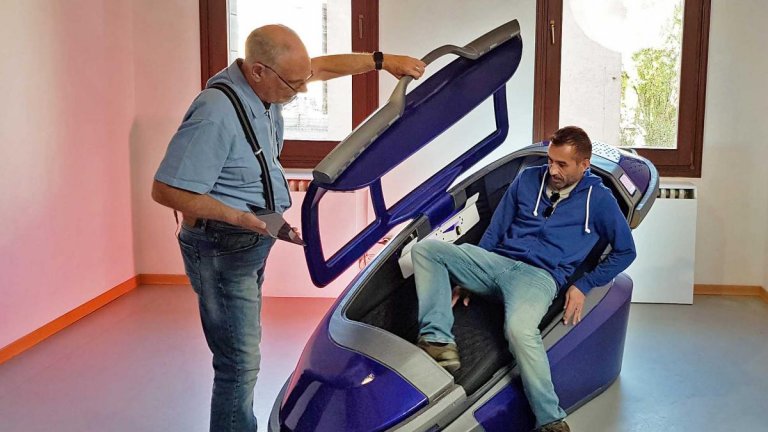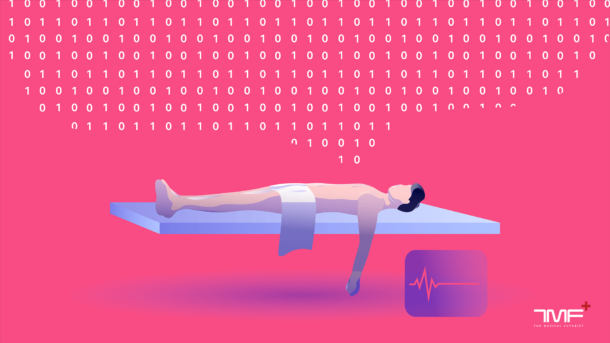In early 2021, Spanish lawmakers legalised euthanasia and assisted death for patients suffering from unbearable and/or incurable conditions, making Spain the sixth country in the world to do so. Prior to this move, the Netherlands expanded the eligibility to euthanasia to include advanced dementia patients, provided they made an earlier written request.
Following the new law in Spain, Health Minister Carolina Darias said that “we are heading towards a more humane and fair society”. She further praised this acknowledgement of the right to an assisted death as a crucial move “towards the recognition of human rights”.
As countries tend to legalise euthanasia and assisted death, it is only a matter of time before technology comes into the picture; especially given that we are in the digital health age. Indeed, in December 2021, news emerged about an organisation developing a 3D-printed capsule destined for use in peaceful assisted suicide; without the need for a professional and that may legally be operated in the country. The developers aim to de-medicalise the dying process and even plan to integrate an artificial intelligence system to gauge the person’s mental capacity before they can employ the device.

While euthanasia and assisted death are sensitive topics to discuss, the genesis of so-called “tech-assisted dying” makes them a timely matter. Such novel methods will surely generate a host of legal and ethical issues to which we might not have definitive answers now. But this article contemplates the role of technology in euthanasia and assisted dying, as we might increasingly deal with the topic in the future.
Euthanasia, assisted dying and assisted suicide
While they have different meanings, “euthanasia”, “assisted dying” and “assisted suicide” are often used interchangeably. For the sake of simplicity, we will also use the terms interchangeably here, but it could help to know more about the differences between them.
Dr. Andrew McGee, an Associate Professor in the Faculty of Law at the Queensland University of Technology, describes “assisted dying” (or “assisted death”) where a medication that speeds up the process of dying is ultimately taken by the patient. He highlights that this process involves people who are already dying. On the other hand, “assisted suicide” also involves people without terminal disease but getting assistance to commit suicide. As for “euthanasia”, Dr McGee points out that it involves a physician administering the drug to the patient.

Countries and states have different reasons to allow for legally accepted euthanasia. Some researchers have found that in some U. S. states, the loss of autonomy and dignity are dominant motives for physician-assisted suicide. However, for those with similar woes but living in areas without the right to an assisted death, could technology become their assistant?
Technology assisting the dying process
Packing an aesthetic that feels reminiscent of the hypersleep chambers in the movie Alien, the futuristic-looking Sarco assisted suicide pod was designed to suggest a trip to a new destination. As its name implies, it is a one-way destination. It aims to provide conditions for a “peaceful, even euphoric death” to those in need of assisted death in a legal way; while not requiring the assistance of a doctor.
“It’s a 3-D printed capsule, activated from the inside by the person intending to die,” explains Philip Nitschke, founder of Exit International which is developing Sarco. After answering some questions, the person can activate the machine which will fill the pod with nitrogen and reduce the oxygen level.
“The person will feel a little disoriented and may feel slightly euphoric before they lose consciousness,” adds Nitschke. “Death takes place through hypoxia and hypocapnia, oxygen and carbon dioxide deprivation, respectively. There is no panic, no choking feeling.”
There are plans to integrate eye or voice control to activate the pod as means of improving accessibility. The upper part is detachable to double as a coffin. Exit International further plans to develop an A.I. system to determine the person’s mental capacity; following which they can be granted an access code to the Sarco.
While the Sarco isn’t available for sale or use, Nitschke expects a working pod to be ready in early 2022. He is even hoping to put it to use in Switzerland, where he found no legal issues for the operation of Sarco. The legality of Sarco’s use relies on the fact that it doesn’t require any assistance.
De-medicalising the dying process or treading on thin ice?
While the Sarco might be among tech’s first foray in assisted dying, it might not be the last one. Exit International plans to make the pod’s blueprint available online for 3D printing. This could lead to large-scale availability of Sarco-like devices and what we could term as “tech-assisted dying”. And with such a new term comes new considerations.
With Sarco, Exit International aims to de-medicalise the dying process. “Currently a doctor or doctors need to be involved to prescribe the sodium pentobarbital and to confirm the person’s mental capacity,” says founder Philip Nitschke. “We want to remove any kind of psychiatric review from the process and allow the individual to control the method themselves.”

Source: https://www.swissinfo.ch/
If such tech-assisted solutions to expand access to the dying process become more widespread, the medical and legal sectors will face a host of issues. Who can use or 3D print such devices? When and where can they use it? It could ease the psychological burden on medical professionals by having an automated system assist patients requesting euthanasia. But is this an ethical decision? Maybe patients would favour such a method when they are in unbearable pain and wish for a peaceful death but have no option for euthanasia in their country of residence or are constrained by the bureaucracies involved. And how receptive will society at large be to such a tool?
Those are some of the pressing questions that policymakers will need to address as euthanasia and assisted death take a technological approach.
Deciding how and when we die
However, such ethical, legal, social implications might still be some years off. There aren’t many units of Sarco available, let alone operational. The first one is on display at the Museum for Sepulchral Culture in Kassel, Germany. The second prototype wasn’t deemed aesthetically pleasing and hasn’t been publicly displayed. The third machine is expected to be operational in 2022.
“Several of Sarco’s supplementary projects have been delayed due to the [Covid-19] pandemic,” added Nitschke. “For instance, the development of a camera that allows the person to communicate with the people outside. There needs to be a recording of the person’s informed consent. This has been commissioned and the next step is to get it manufactured.”
But even if Sarco might be facing hurdles of its own, we need to generate discussions about the implications of such technologies because one day, healthcare might become so efficient that we might need to decide when and how we die. It’s a bit far-fetched but we never know; so we might as well be prepared to face such bioethical considerations.
Written by Dr. Bertalan Meskó & Dr. Pranavsingh Dhunnoo
|
At The Medical Futurist, we are building a community for making a bold vision about the future of healthcare reality today. If you’d like to support this mission, we invite you to join The Medical Futurist Patreon Community. A community of empowered patients, future-oriented healthcare professionals, concerned health policymakers, sensible health tech developers, and enthusiastic medical students. If there were ever a time to join us, it is now. Every contribution, however big or small, powers our research and sustains our future. Click here to support The Medical Futurist from as little as $3 – it only takes a minute. Thank you. |
The post The Potential Role Of Technology In Euthanasia And Assisted Death appeared first on The Medical Futurist.







